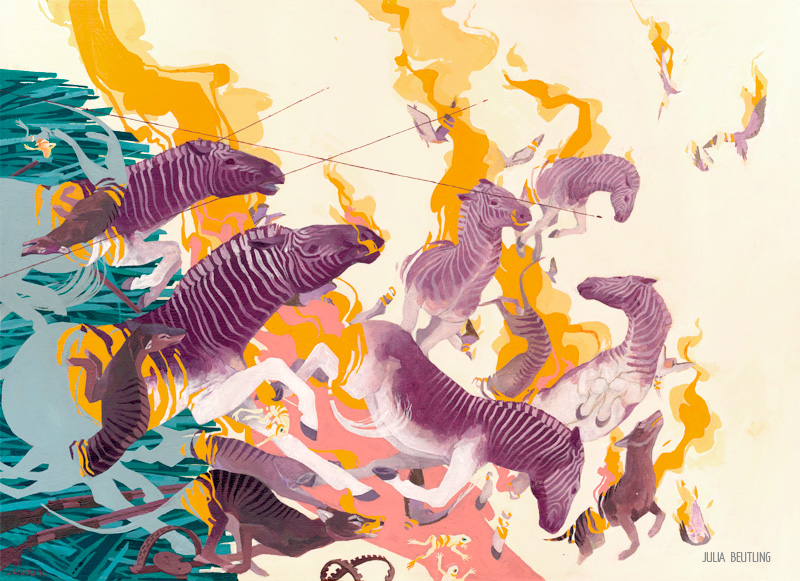
In the course of November, I painted a (for my standards) really huge and complex picture about extinct species, meant to be showcased at the Night of Extinct Animals art show on November 30 in Berlin.
I documented the entire untertaking, showing daily snippets of my painting progress online. There are still a lot of videos of the process, but I don’t know yet if I can make them available as a timelapse at some point. Until then, here’s the entirety of my commented documentary for you:
Im Laufe des Novembers habe ein (für meine Verhältnisse) riesiges und komplexes Bild über ausgestorbene Spezies gemalt, das in der Ausstellung Nacht der ausgestorbenen Tiere am 30. November in Berlin gezeigt wurde.
Ich habe die ganze Unternehmung dokumentiert und tägliche Ausschnitte meines Malpfortschritts online gezeigt. Es gibt noch eine Menge Videos vom Prozess, aber ich weiß noch nicht, ob ich die irgendwann mal als Zeitraffer-Aufnahme präsentieren kann. Bis dahin ist hier meine komplette kommentierte Dokumentation für euch (nur auf Englisch):
#1
Before I start to sketch in Photoshop, I gather reference images, as this painting will be rather realistic in its depiction of these lost species. Because there isn’t much original photography of them left and I need to paint them in lots of different angles and poses, i also use action shots of similar-looking animals. Luckily, the web is abundant with frisbee-fetching dogs and boxing zebras that can easily be re-imagined as tasmanian tigers or quaggas.
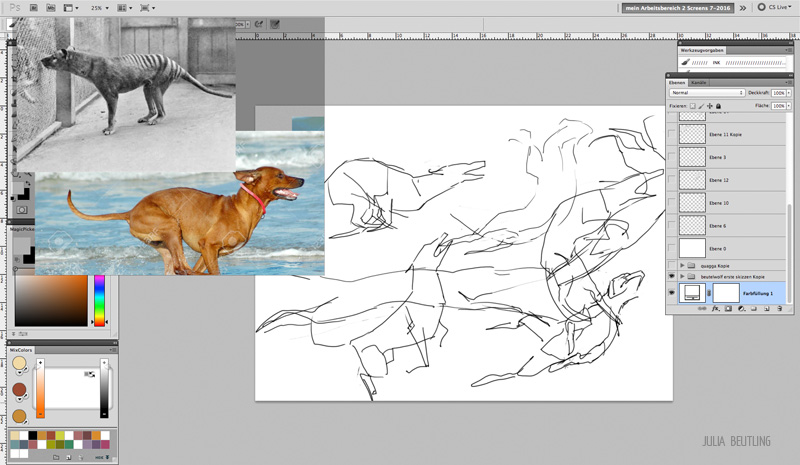
#2
I usually make quite a few early thumbnail sketches in my sketchbook to get a feel for the image. And I use them as my guide to what kind of elements I need and how to arrange them. For this painting, i figure out the final composition in Photoshop, because it’s so much easier and quicker to slide things around and resize them, until I find a composition that I like.
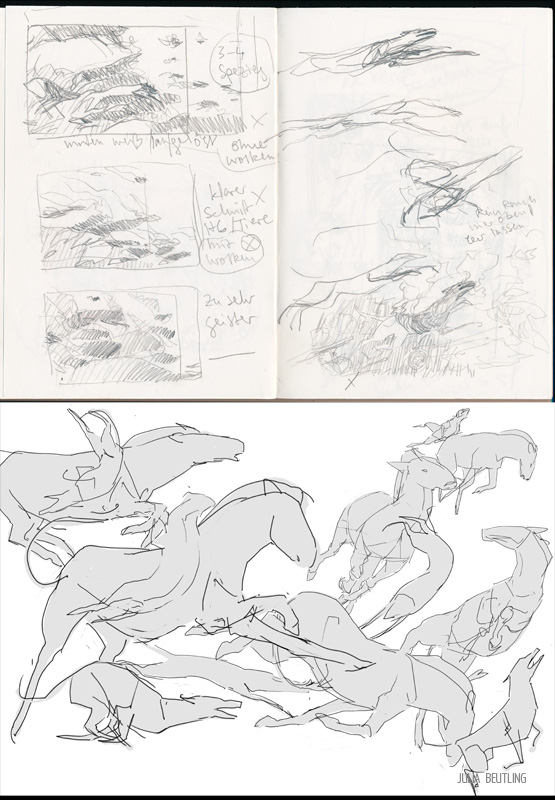
#3
I have decided on a final composition, slapped on some provisional color to use as my guide and printed it out on A4. That finishes the digital stage, everything from now on will be traditional media. I found this old canvas of 50 x 70 cm lying around and courageously decided to go with it. Even if it’s far bigger than I usually work and I haven’t ever done much on canvas anyway. I’m a bit scared to tell you the truth, but it’s also exciting!
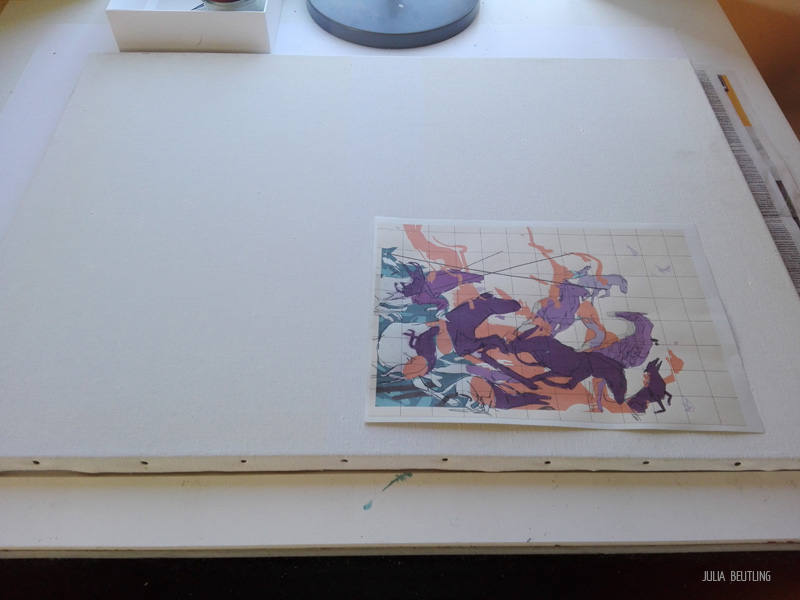
#4
I draw a grid of squares on the canvas that equals the grid on my printout, only bigger. Then I use it as a help to replicate my digital sketch on the canvas. Sure, there are much fancier ways of enlarging a drawing, but as my initial sketch is so rough and i don’t want to fiddle with a projector, I just do it the old-fashioned way. I’ll have to rework the sketch in the next step anyway.
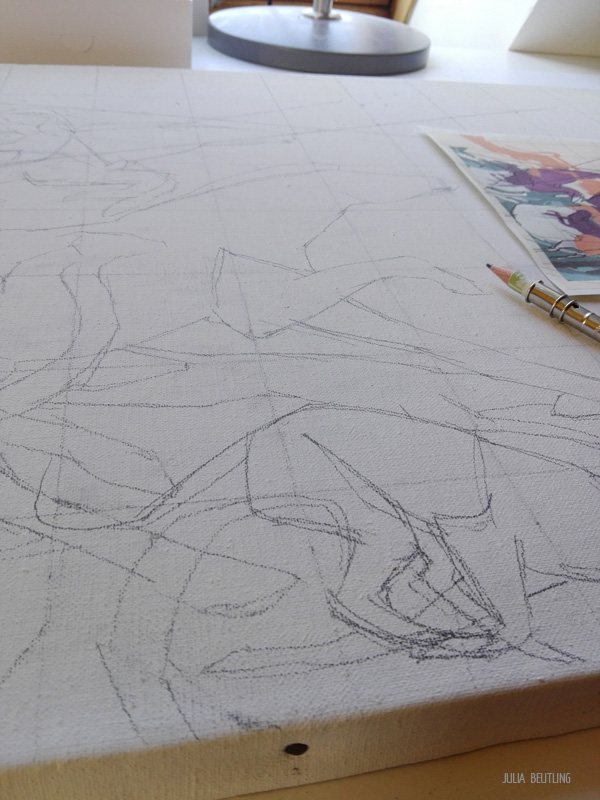
#5
Time to pull out my references again and refine the sketch. I notice I have to change the quaggas’ head and limb dimensions, as they are still too horse-like in their proportions. And I introduce some smaller animals into the picture that I didn’t need for the overall composition, but I need them now. Drawing toads is amazingly fun, did you know that?
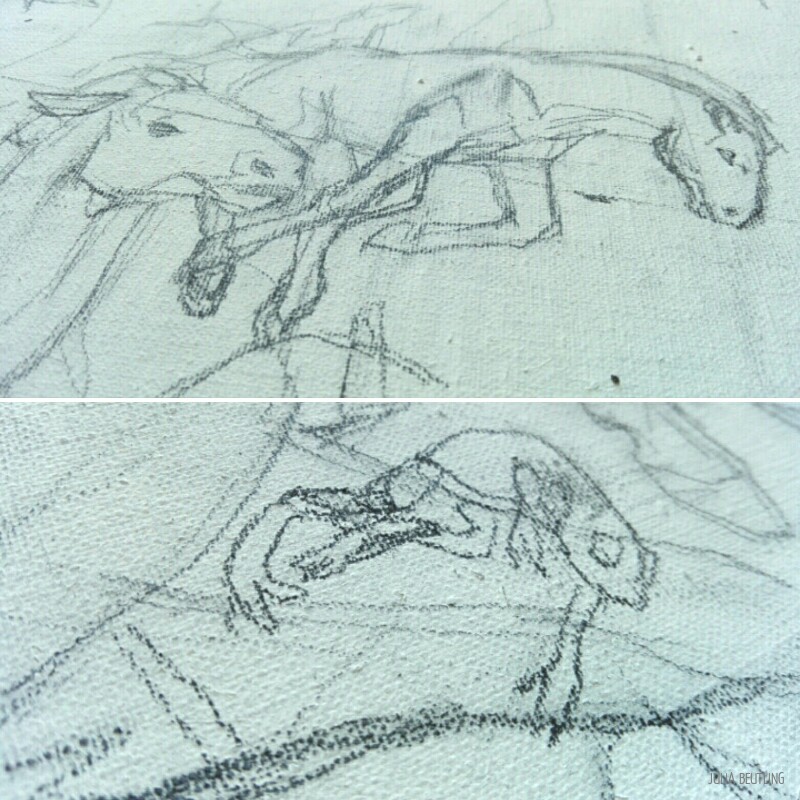
#6
Still refining the sketch… I never realized how much graphite these canvases swallow! Goodbye, trusty pencil…you were one of two that found their end in the creation of this piece.
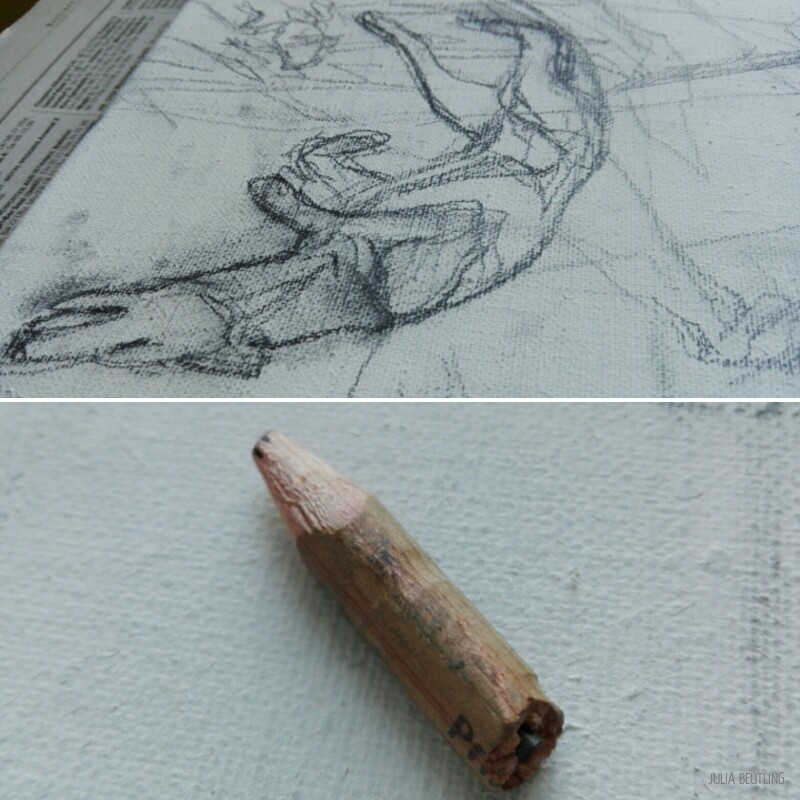
#7
Finally I can get my paints and brushes out and actually start with colour! I’d like to have used gouache for this one, but instead I’ll be going for acrylics. Simply because frankly I might run out of gouache halfway through the picture, I just own far more acrylics and want to use them up.
As I take this picture, I notice that somehow all my beloved synthetic flat brushes seem to have disappeared, a small catastrophe. Makes me leave the house straight away and stock up on new flat brushes before I do anything else. I’m so much more comfortable with them than with round ones.
Oh, and yes: my mixing palette is an old plate.
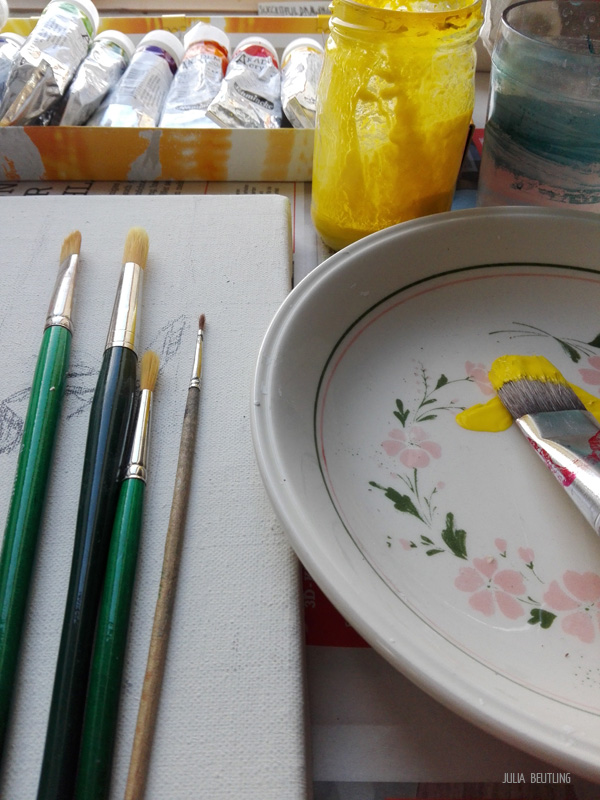
#8
First, I lay in my single base colour for the background, no refinement at all at this stage. I want to paint over the objects’ edges (they’ll soon get their own base colour anyway) but still keep all the lines visible.
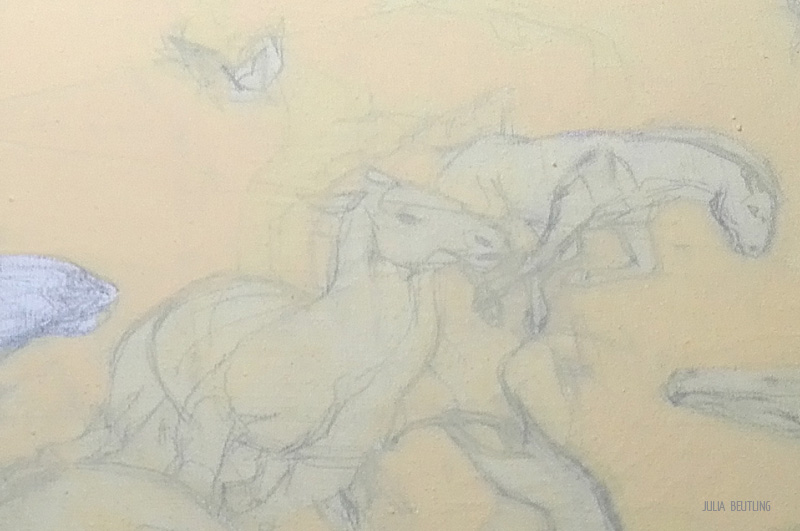
#9
Next, I add my orange and purple base colours. I need to be a bit more careful about my outlines at this point, but not too much as there will be more colour layered on top later. Acrylics dry up super fast once they’re out of the tube and my canvas is pretty big, so I have to concentrate. I can only have very few usable colours on my palette at one time and usually pick one main hue that I’ll use for for an hour out two, covering all the bits of the picture that require that particular colour. When I’m OK with the result or when the paint has dried up, i pick another colour and start again, always working on all parts of the painting at once.
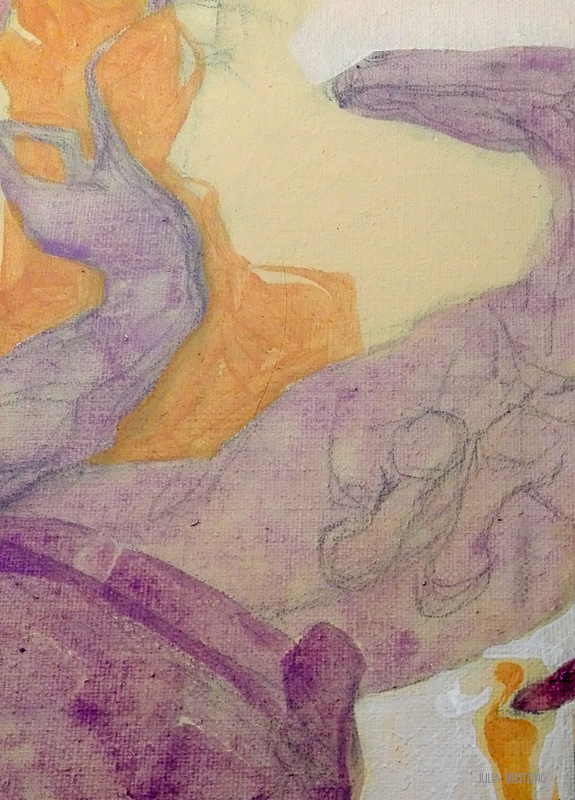
10
The green, grassy part of the picture also gets a base colour, and some shadow areas. I continue to paint on the sides of the canvas, since I plan to keep it unframed and like the effect.
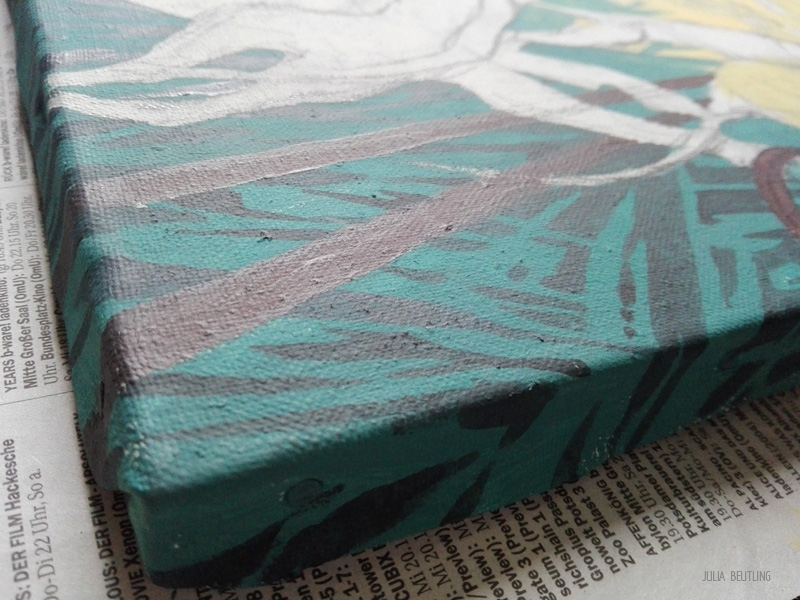
#11
I don’t like the way my yellowish background colour stands against the purple animals, so I add a thin layer of white. The yellow can peek through around the orange flames and make them a bit more interesting that way.
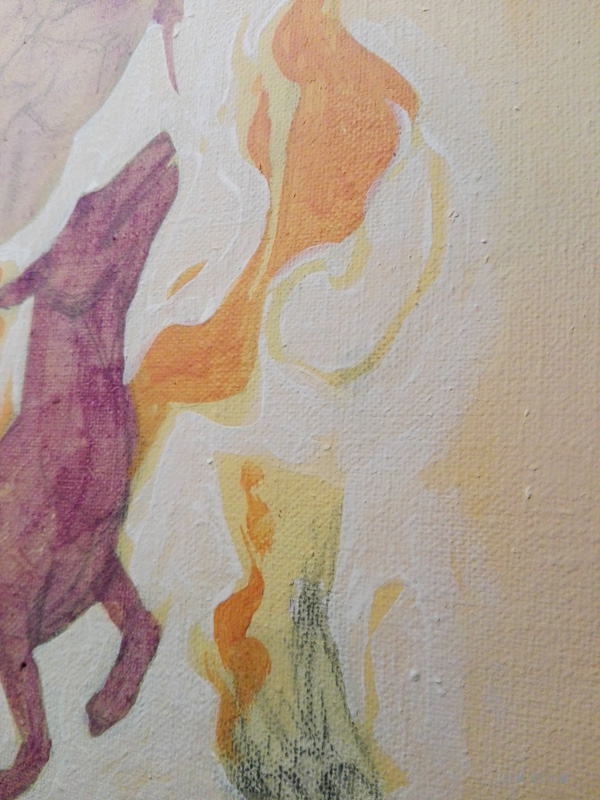
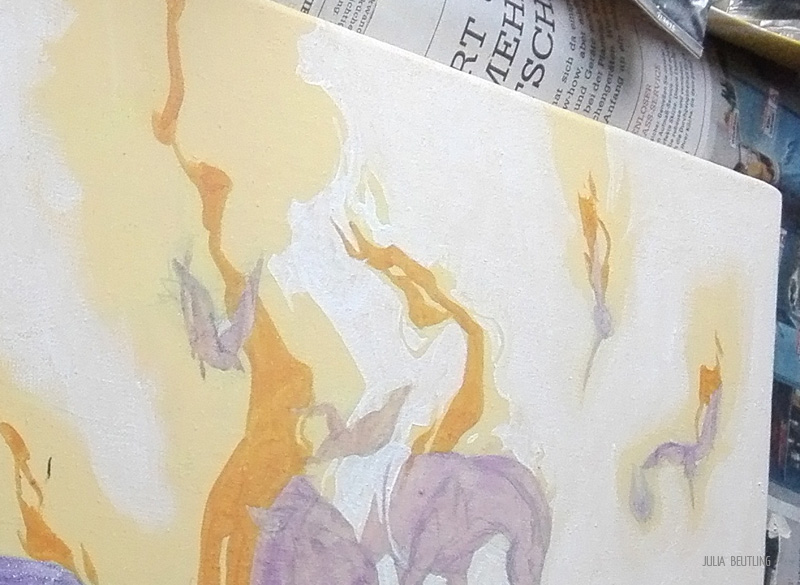
#12
I begin to refine the quaggas, adding some white to roughly define their markings. They’re starting to look three-dimensional, feels nice! :3 I’ll add the stripes later.
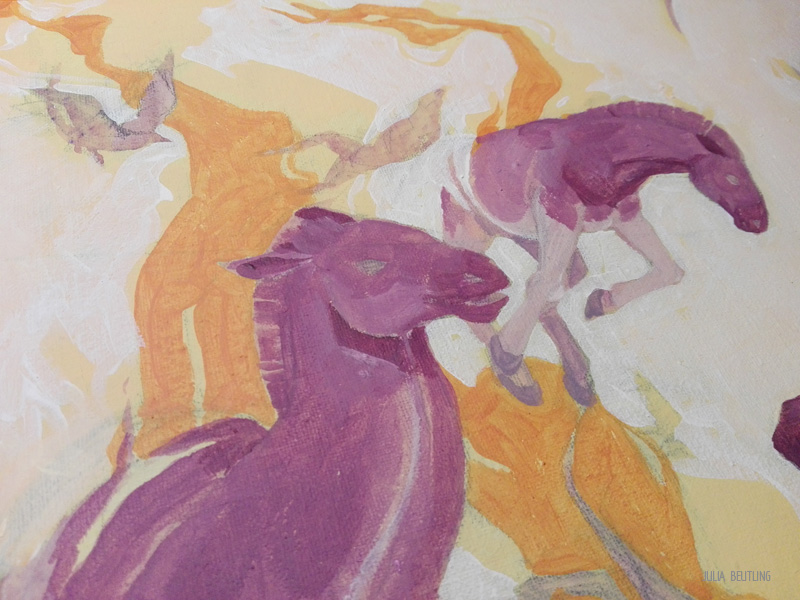
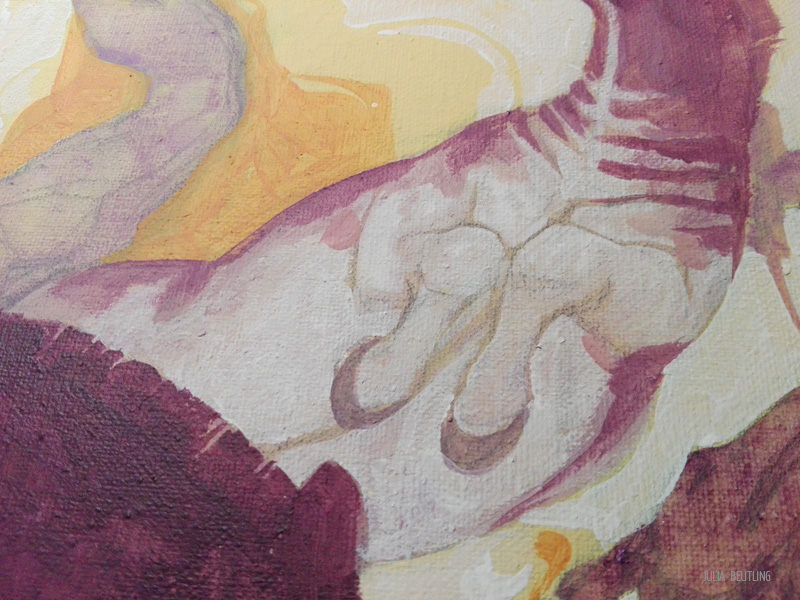
#13
I start refining the Tasmanian tigers and go for a more brownish hue than the quaggas. It takes a while for me to work out their final look, I’ll keep tweaking them while I work on other parts of the painting. Annoying, but necessary to find a result I like. I also start to repaint several big colour areas, so they get an even, flat look with crisply defined edges. And I have to change some colour decisions. The grey area in the photo was first white, then light blue, now I go for grey. I might even change it again, depending on how the overall image turns out.
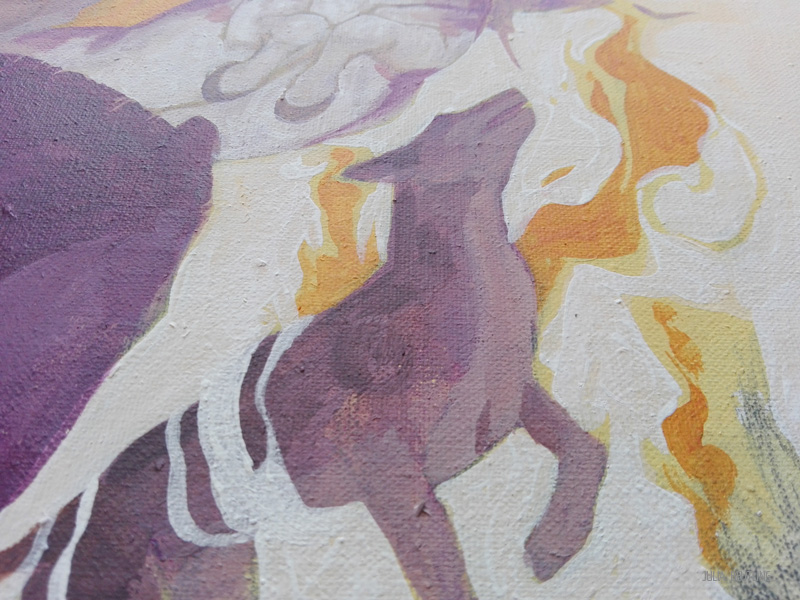
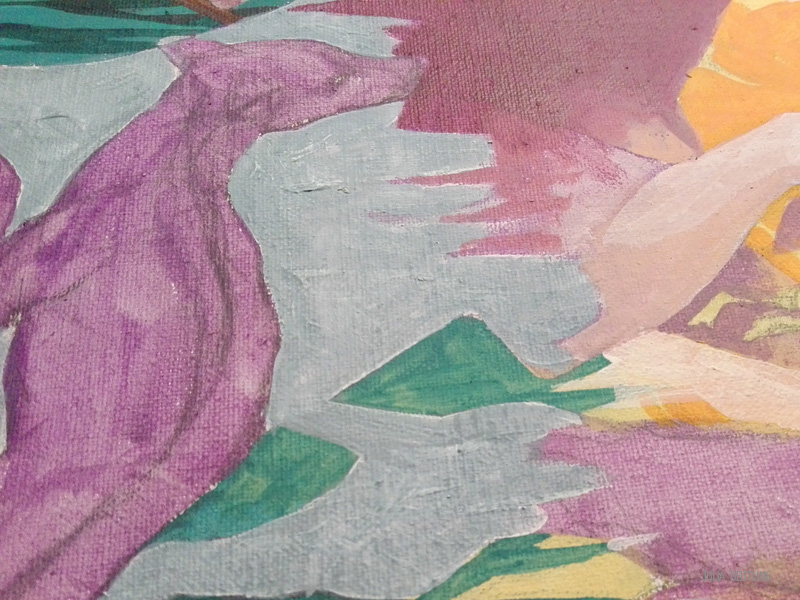
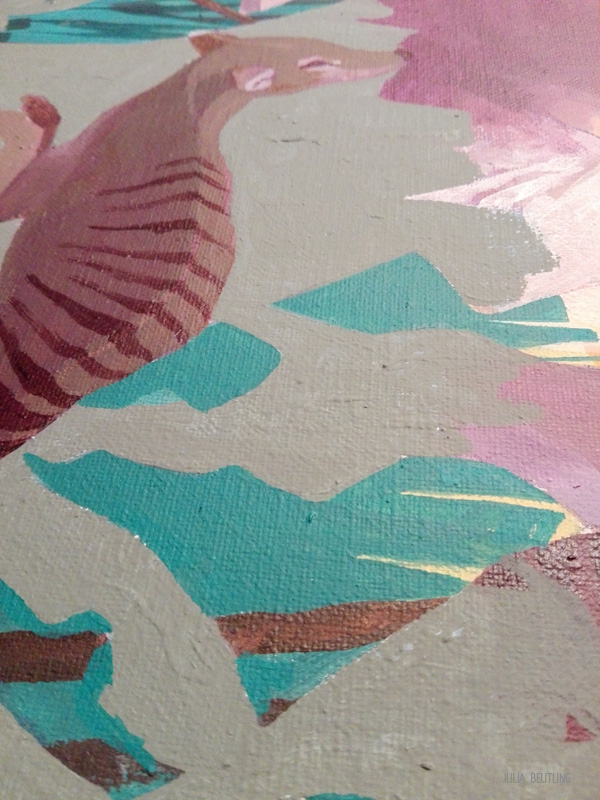
#14
I have noticed that something in my digital colour study wasn’t thought out properly. I intended to use the quaggas as big dark shadows in front of a light background, without noticing that their lower half is actually completely white. Doesn’t contrast well with another light background colour, right? So I take a photo and bring it back into Photoshop to play with the colours until I feel like their working. Back on the real picture,I’m changing some yellow and orange parts accordingly. Dark pink works much better. Still, i know I’ll have to go on working on these contrasts for some more time while I refine other areas.
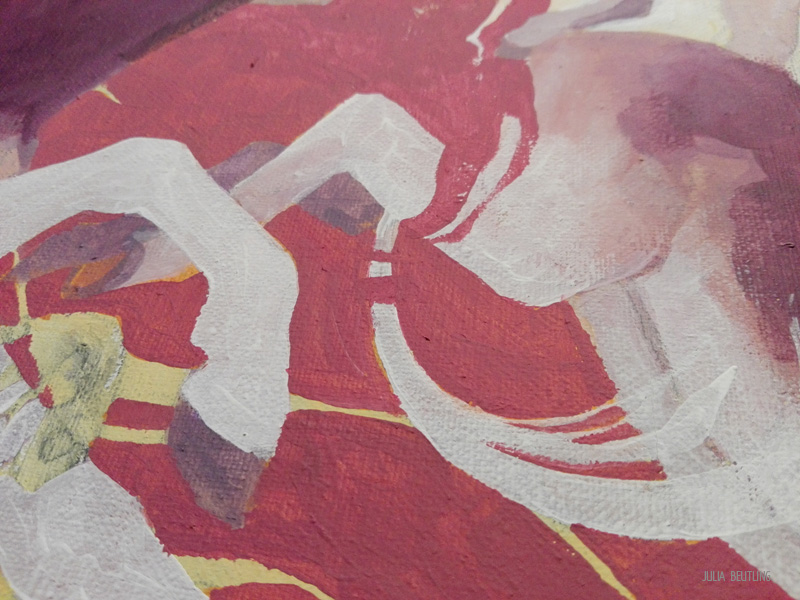
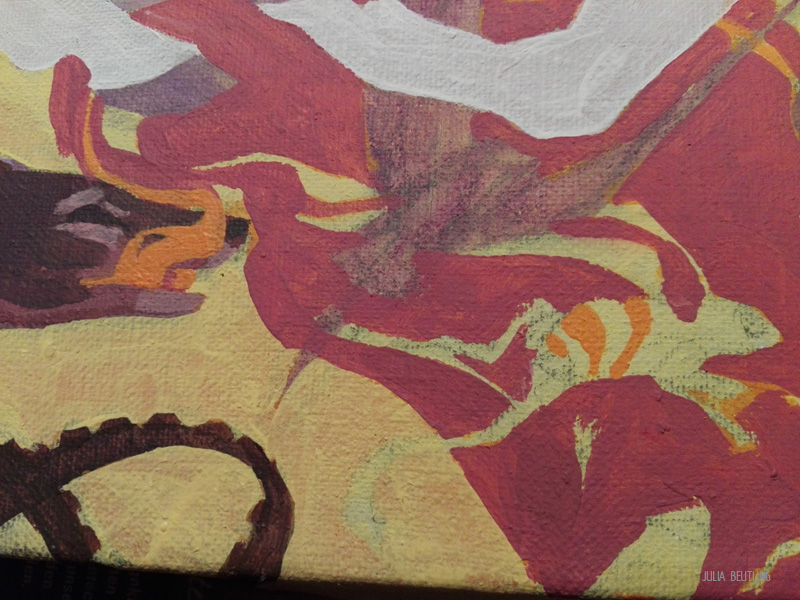
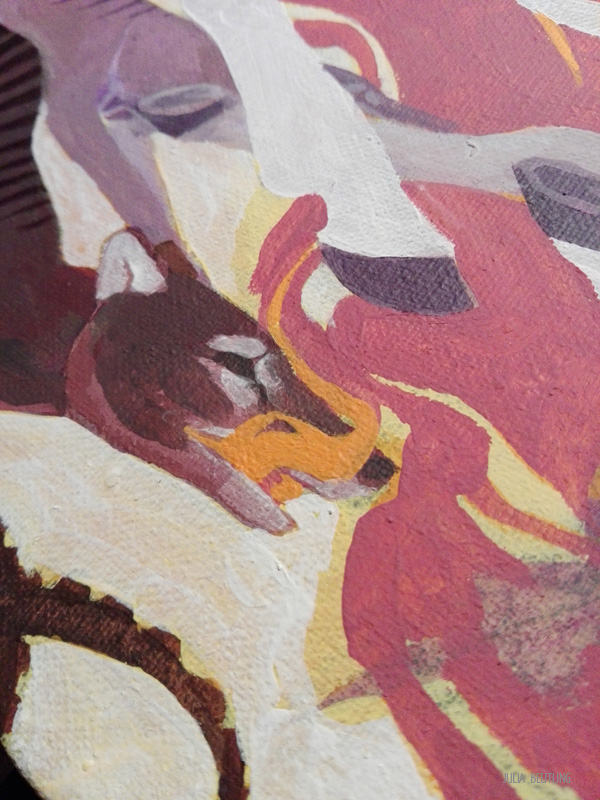
I also begin to work on some fun details of the abstract shapes, since I already have the colours mixed and on my brush. I always love doing things like this <3
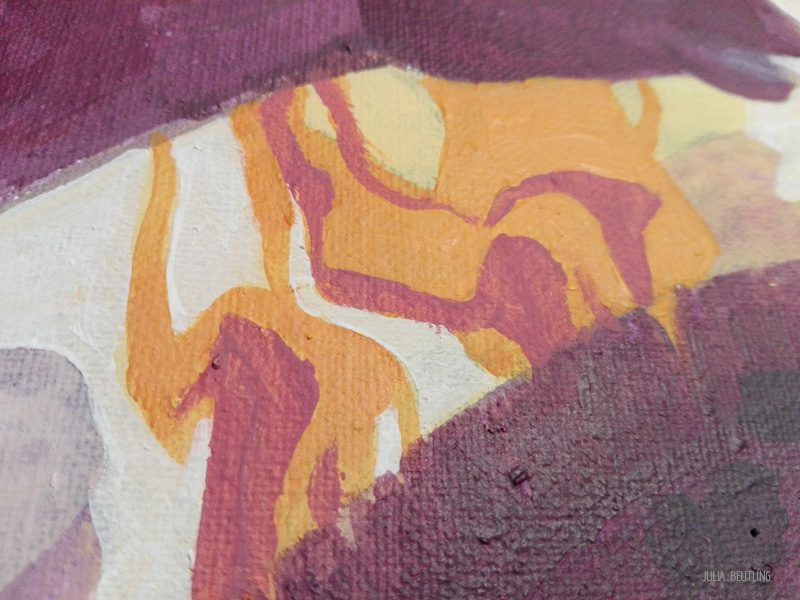
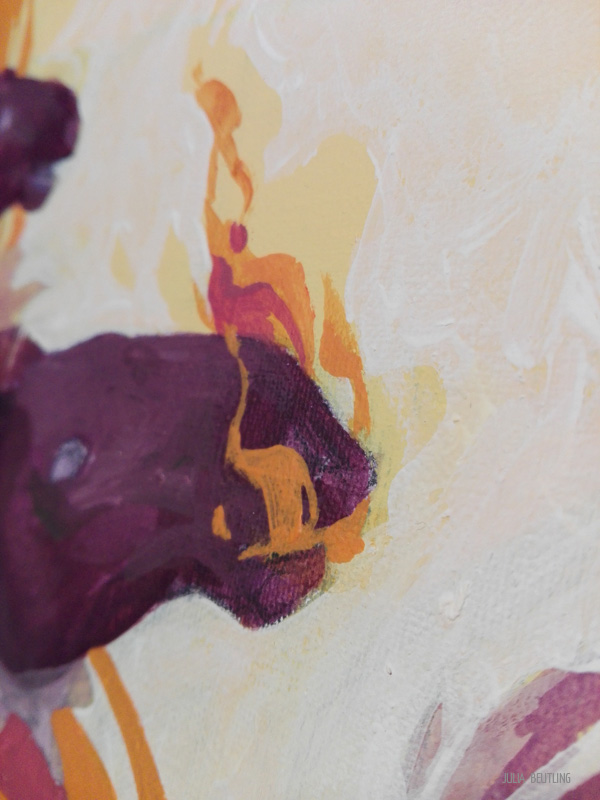
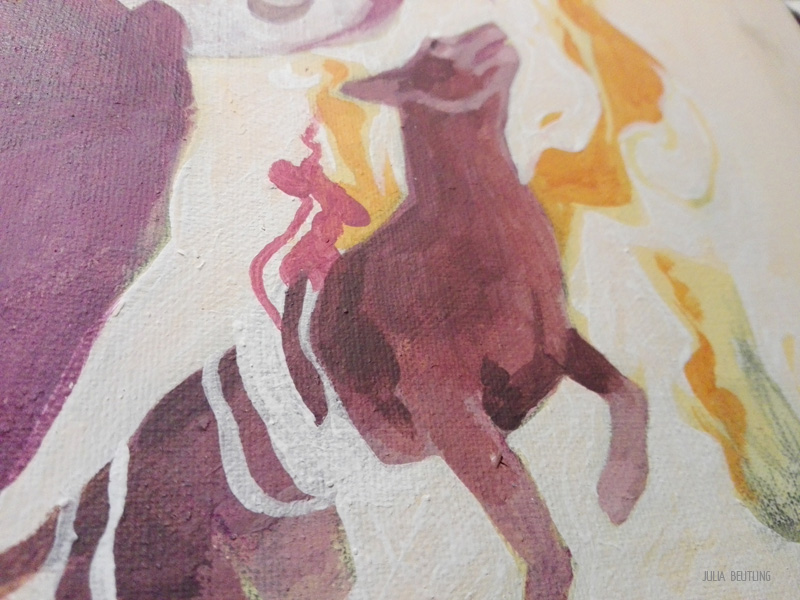
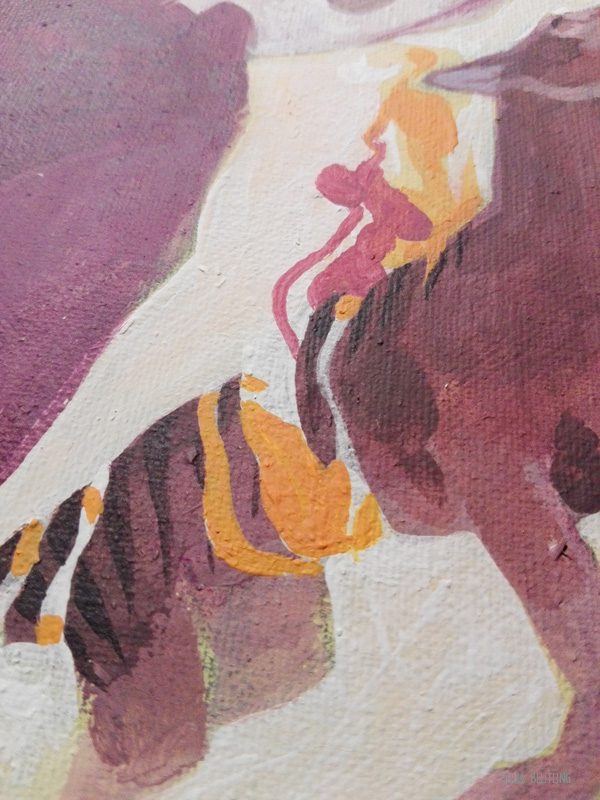
#15
I finished the grass on the left part of the painting by adding some lighter blades, and really like the result. Plus I finally decided how to treat the animals’ transition into the grass. You might already have guessed from the sneak peeks that my animals are dissolving into nothingness, and I want them to half unravel like a piece of knitting and half shatter like pottery, their insides glowing brightly. It will not only look super cool but also make for a neat colour contrast. I start by defining where my “outer skin“ shreds are supposed to go.
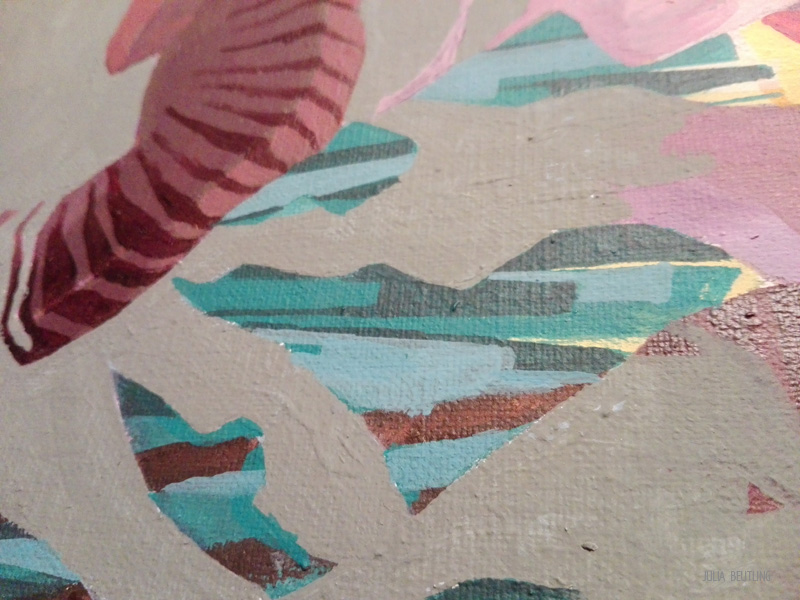
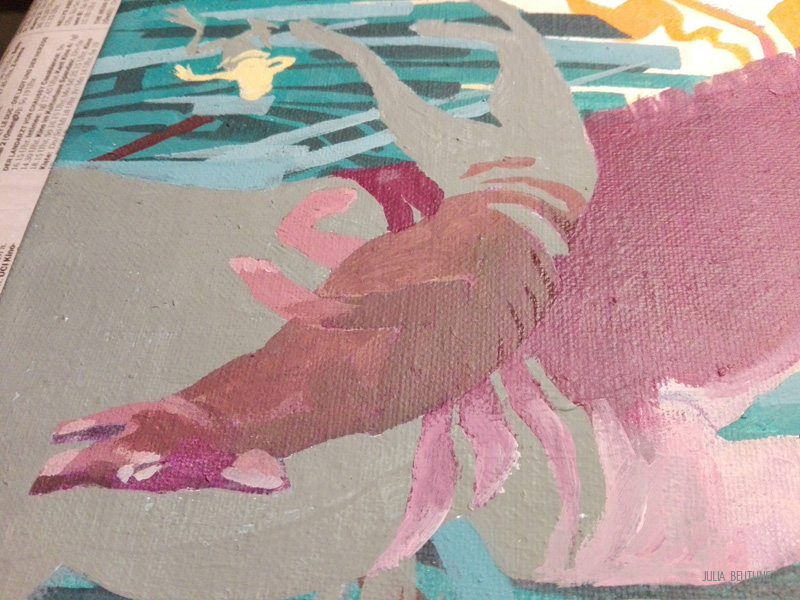
#16
I add the orange inside glow and work back and forth on the details to get the unraveling effect I want. I feel the picture is slowly coming together c: I get some doubts if this particular orange tone harmonizes with the other colours in the painting, but I leave it for now. There are still too many unfinished parts here to determine whether this hue will work out in the end.
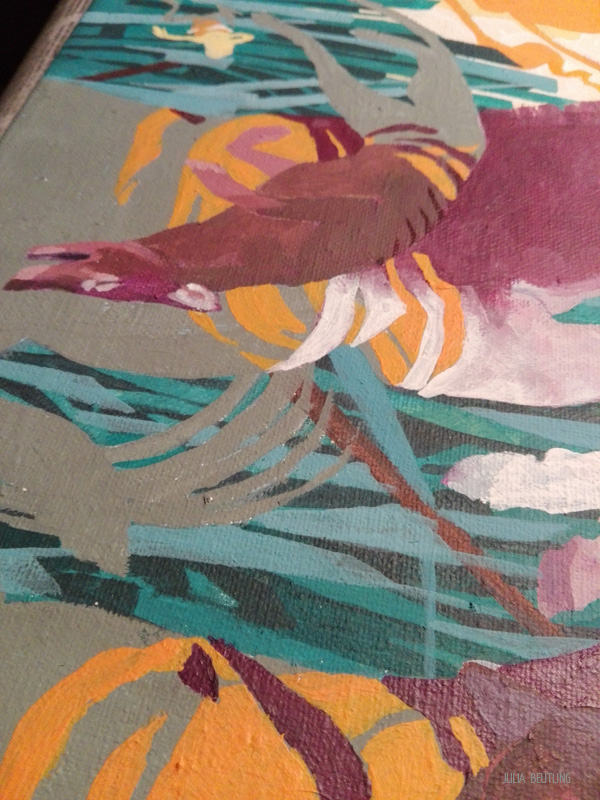
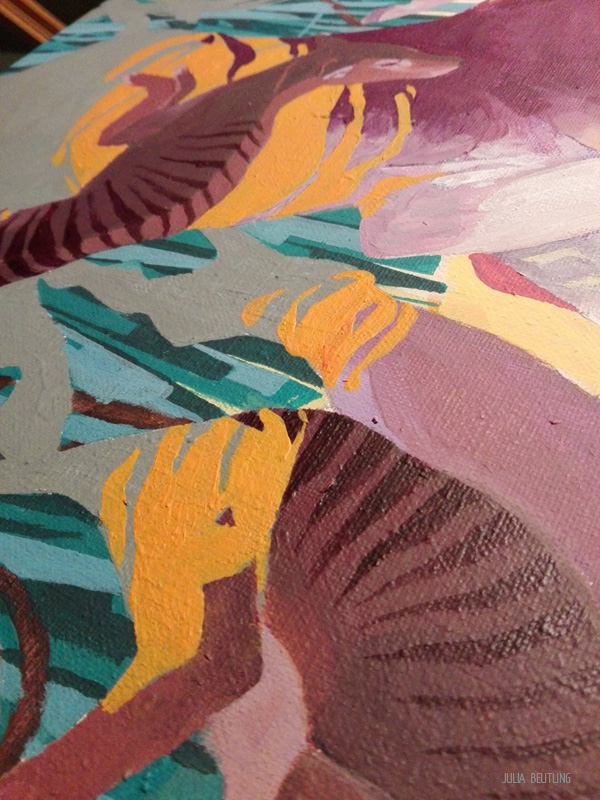
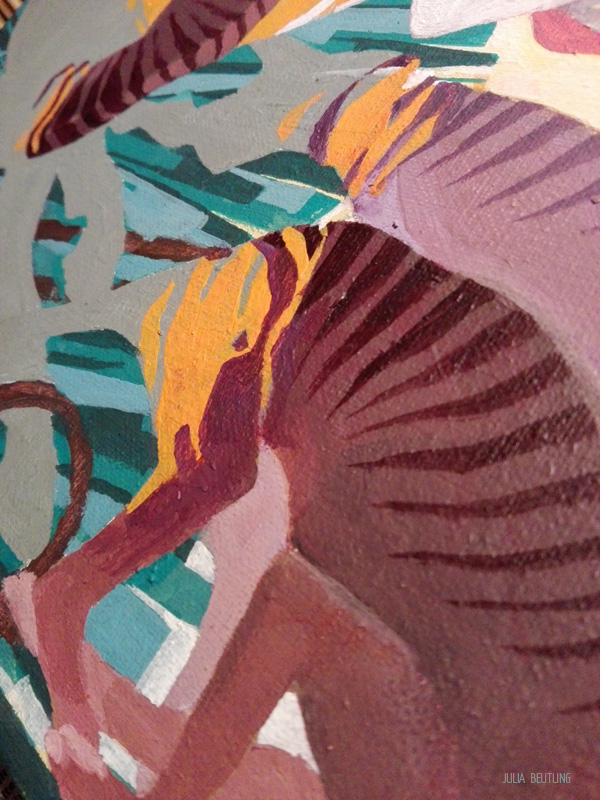
#17
The Tasmanian tigers have been touched up again and are pretty much finished by now. So I begin to detail the quaggas’ faces, using reference photos again. Really looking forward to finally be giving them stripes now! I wonder if it could possibly ruin the painting, and notice how super preciousI have become with this picture… probably a sign that I’m slowly coming closer to the finishing line.
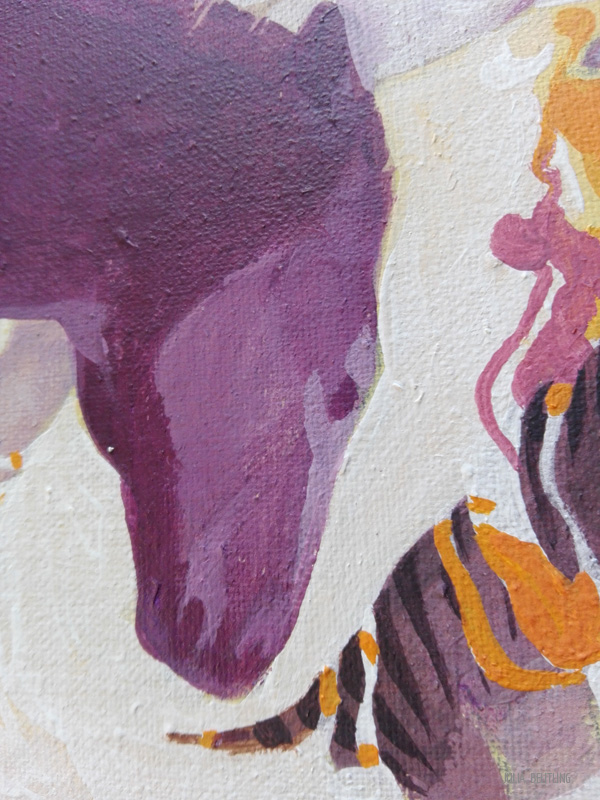
#18
I go on to detail the quaggas. Plus, you can see here how I transition the area I changed to pink to orange. The hardly painted light purple areas are going to become birds later.
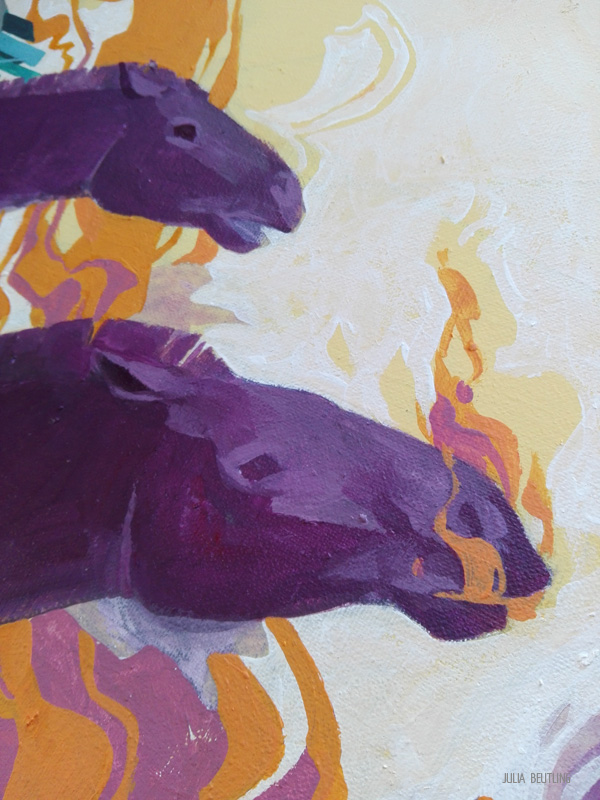
#19
… and then there were stripes!
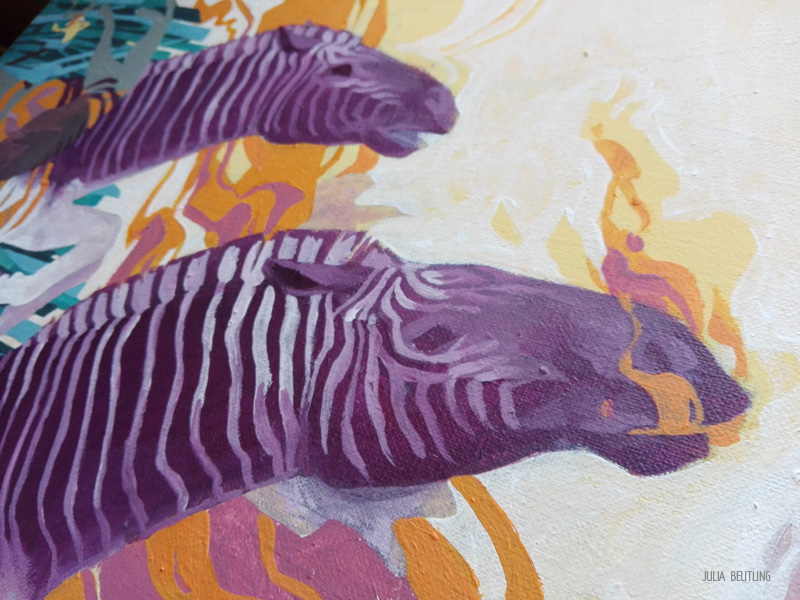
#20
I finish all of the quaggas and start on the passenger pigeons. They were actually quite colourful birds in comparison to other pigeons, while my animals in this picture are rather monochromatic. So I have to take some licence with the plumage. They take me quite a long time to finish, since there are still four different shades used for each of them. Plus, they’re so tiny that defining them takes rather steady hands and me leaning in really close to the canvas.
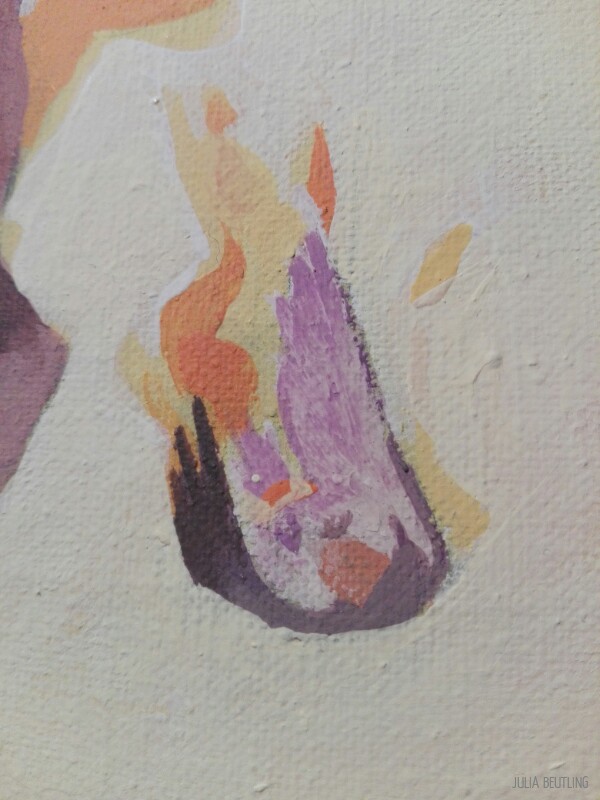
#21
The last animals I detail are the golden toads. Because of their delicate fingers and toes and their small size on the picture, I have to pay even more attention to them than to the birds. Luckily there are only four of them in there.
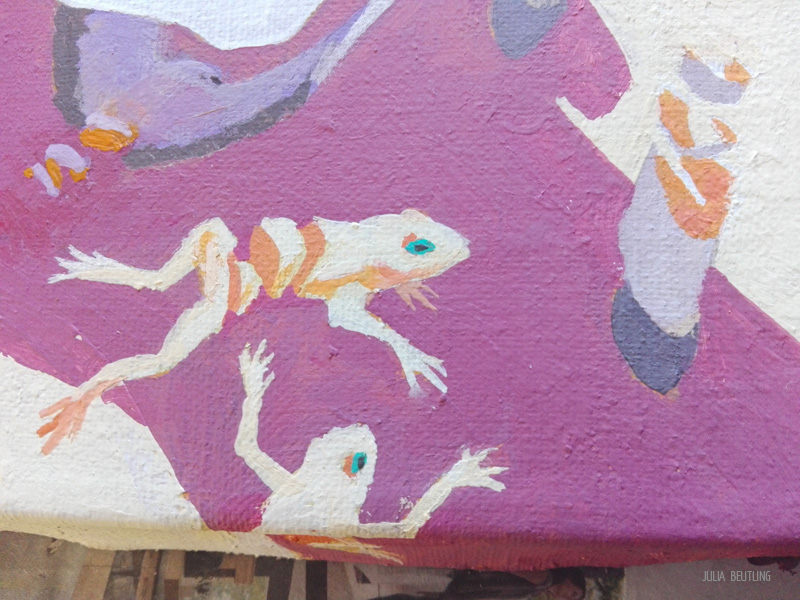
#22
The picture is nearing its final stage! Now that I have almost all the detailed areas finished, I take my time to rework the big, single-coloured areas. They look flaky and a bit shabby now, with the underground shining through the thin layers of colors. And they have repair spots all over. I want them to have a flat and smooth appearance, so I mix big batches of colour and lay them in. Very tedious work, since I have to paint slowly and carefully to not kill any of the details everywhere and to keep the nice, crisp edges.
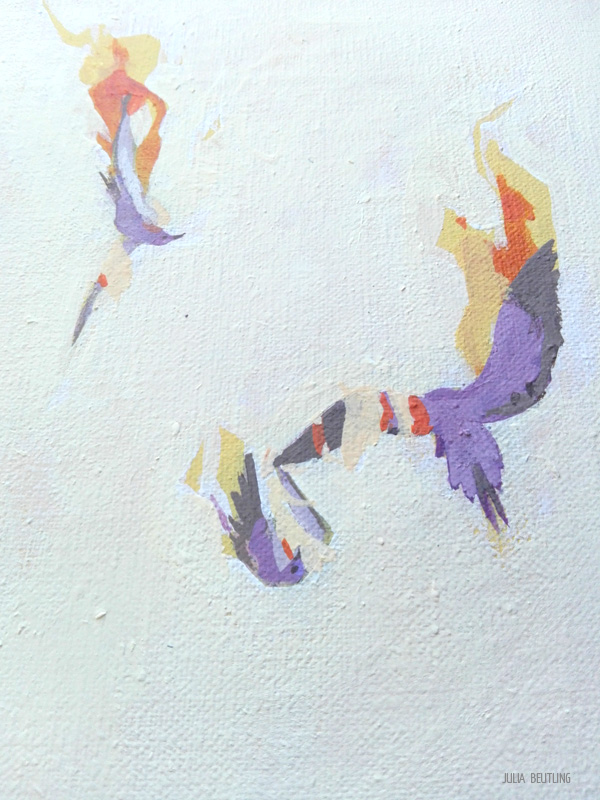
#23 – last step!
Now that almost all parts of the painting are as detailed as they are supposed to be, I tackle something that has been bothering me for days now. The colour harmonics just aren’t right. It’s been a while since my last big acrylics painting, I’m not too familiar with the brand I’m using at the moment, plus I have been working on this picture mostly at night under artificial light which changes the colour appearance. As it turns out, the darker background colours overall are too loud and saturated, they fight against one another. I take another photo of the entire painting and manipulate the colours in Photoshop until they work better, and use this result as orientation again. I repaint big portions of the picture: all orange and pink areas get lighter, and the grey shades on the grass get their fourth (!) new colour coating, light blue. I’m much happier with the result, although it still isn’t perfect yet. I decide to just leave it as is, though, as I would end up spending countless more hours just repainting solid blocks of colour. It works well enough now, and I decide to give up the colour battle.
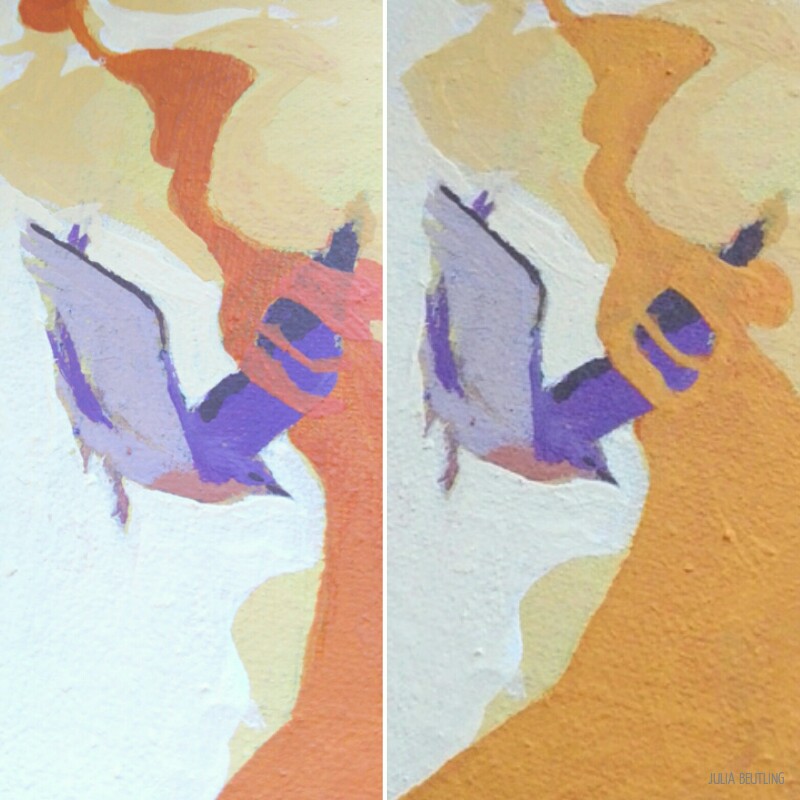
The painting process is finished!
This is the final piece “Losing Species“ that is first shown at the Night of Extinct Animals art show.
The painting itself became far more complex than I first planned, mainly because my sketch was so complicated already. I’m not too happy with how the colours turned out, and I don’t feel acrylics were the right choice for this picture. But it feels like I did make some artistic progress with it and I’m proud of having working at it for almost three weeks, on and off. Plus I learned quite a bit in the process, so I hope I’ll have less trouble with the next one C:

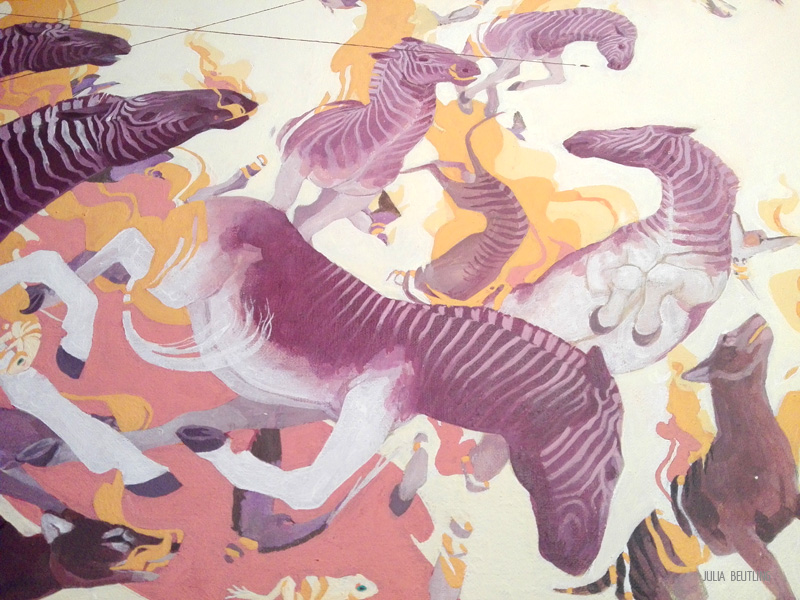
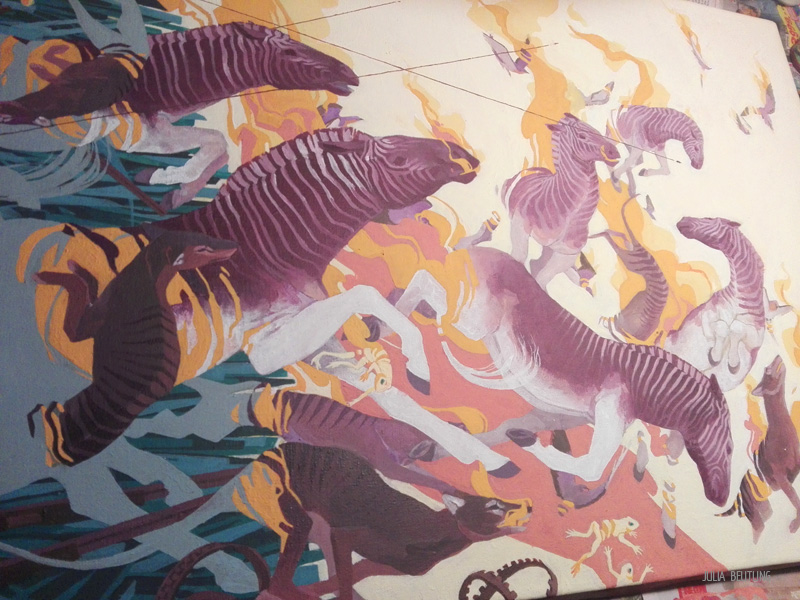
The animals portrayed in “Losing Species“ are quaggas, tasmanian tigers (thylacines), passenger pigeons and golden toads (you can’t see them in this detail shot, though). All of them have tragic histories, but especially those of the thylacines and pigeons are heartbreaking and perfect examples for the way humans bulldoze their way through the animal kingdom without ever using their brains or their hearts. Researching extinct species before starting this picture made me very sad, let me tell you.
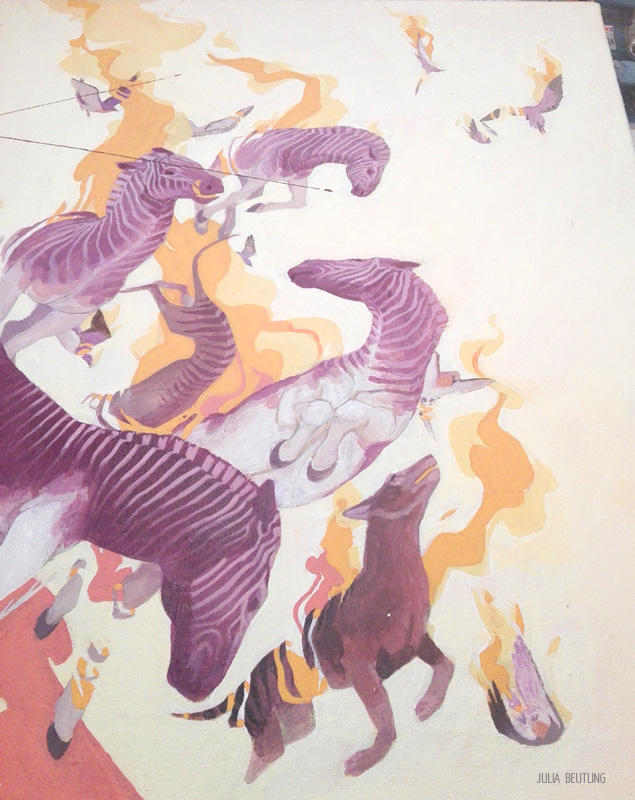
Posted By
Julia
Categories
Painting process
Tags
beutelwölfe, quagga, quaggas, tasmanian tiger, beutelwolf, thylacine, tasmanischer tiger, wandertaube, passenger pigeon, goldkröte, golden toad, golden toads, thylacines, tasmanian tigers, aussterbende tiere, wandertauben, passender pigeons, martha, martha passenger pigeon, painting provess, illustration process, working process, animal artist, acrylic painting, epic, illustration art, illustration artist, traditional artist, extinct species, illustrator, illustration, baumhaus berlin, making of, work in progress, acrylics, wip, painting, vegan art, traditional art, remembrance day for lost species, lost species, losing species, extinct animals, night of extinct animals, nacht der ausgestorbenen tiere, ausgestorbene spezies, ausgestorbene tierarten, artist, vegan artist, extinction, lost animals, ausgetorbene tiere, aussterben, aussterbende tierarten, aussterbende spezies